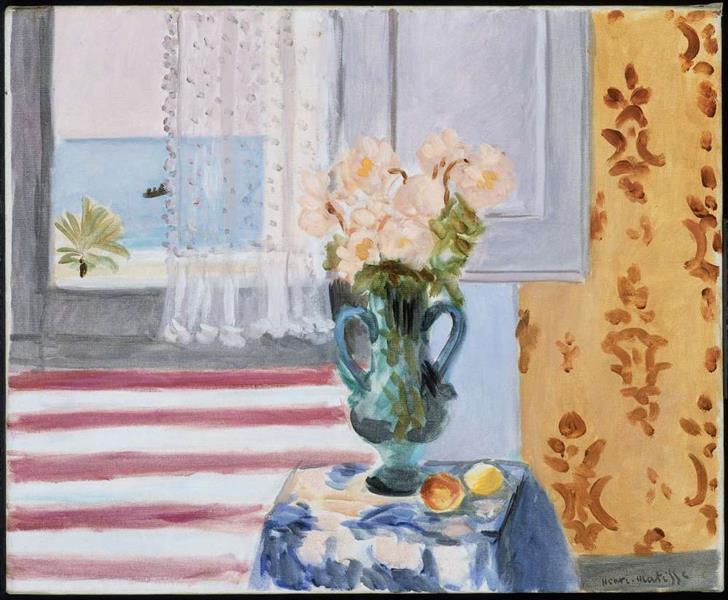Description
Henri Matisse, one of the most prominent figures of modern art, found in the simplicity of everyday objects an inexhaustible source of inspiration. His work "Vase of Flowers" from 1924, measuring 73x60 cm, is a clear example of his mastery in the use of color and composition.
In this painting, Matisse presents us with a vase of flowers, an apparently simple theme, but which in his hands transforms into a work of profound visual impact. The vase, located in the center of the image, is the most prominent object. The flowers that sprout from it unfold in an explosion of vibrant colors and varied shapes. Matisse's chromatic choice is bold and deliberate: intense reds, sunny yellows, and fresh greens give the flowers a palpable vitality.
The painting stands out for the clarity of its composition. The elements are arranged in a way that guides the viewer's gaze through the work with natural fluidity. The vase and flowers do not compete with the background but harmonize with it. The background is relatively simple, with a predominant use of light tones that contrast with and at the same time enhance the colors of the flowers. This allows the viewer to focus on the shapes and colors of the foreground without distraction.
One of the most notable aspects of "Vase of Flowers" is the way Matisse manages to convey a sense of spontaneity and freshness. The flowers seem to have been carelessly placed in the vase, as if the artist wanted to capture a fleeting moment in time. This evanescent quality is a distinctive feature of the artist, who always sought to capture the essence of his subjects with the least possible artificiality.
In terms of technique, Matisse's brushstroke is free and economical, suggesting rather than detailing each element. It is this ability to suggest through color and shape, rather than describe with meticulous details, that makes his work so impactful. The texture of the painting is uniform, without impastos or reliefs that distract from the interplay of colors and shapes.
"Vase of Flowers" also speaks to Matisse's love of nature and his interest in capturing the intrinsic beauty of things. Throughout his career, Matisse painted numerous still lifes and floral scenes. This painting in particular is reminiscent of his other works like "Anemones" or "Flowers and Fruits," where the artist continues to explore the relationship between color and form, as well as the balance between decorative elements and their spatial arrangement.
The year 1924, when Matisse created this work, was a period of artistic maturity in which the painter had already moved beyond the influences of Fauvism and had found his personal style. This era is marked by a greater formal reduction and a more introspective and contemplative approach. It is a moment when Matisse consolidates his worldwide reputation and continues to evolve towards a simplification that will culminate in his famous late works with painted paper cutouts.
"Vase of Flowers" not only captures the essence of the depicted subject but also acts as a reflection of the artist's soul. The serenity and joy that emanate from the painting are a testament to Matisse's ability to see the world with ever-fresh and optimistic eyes. This work is a celebration of simple beauty, an ode to the colors and shapes that surround us, and a demonstration of the unmistakable genius of Henri Matisse.

